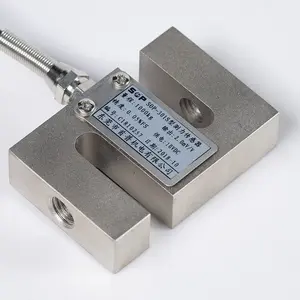
500T Factory Electronic Belt Scales Large Range Heavy Duty Tension Pull Pressure Force Measurement Pancake Compression Load Cell





















Compression load cells are specialized devices used to measure force or weight by converting a compressive force into an electrical signal. These instruments are integral to various industries, serving as critical components in scales, testing equipment, and industrial machinery. The versatility of compression load cells is evident in their range of applications, from home appliances to commercial and industrial settings.
There are several types of compression load cells, including canister load cells, low profile compression load cells, and miniature compression load cells. Each type serves a specific function, from heavy-duty weighing in harsh environments to precise measurements in limited spaces. For instance, canister type load cells are often employed in truck scales and rail scales, while miniature tension load cells are suitable for medical devices and laboratory instruments.
The construction of a compression load cell typically involves robust materials such as alloy steel or stainless steel, ensuring durability and longevity. Some models come equipped with a compression load cell with display or a compression load cell with digital readout, offering convenience and accuracy for the user. The design of these cells often focuses on providing stability and accuracy even under fluctuating conditions.
The advantages of using compression load cells include their precision and reliability. These sensors are designed to withstand challenging environments while maintaining their performance. The compression load cell sensor technology ensures that measurements are not only accurate but also repeatable, which is crucial for quality control and testing processes.
Selecting the appropriate compression load cell depends on specific requirements such as load capacity, size constraints, and environmental conditions. For applications requiring a compact solution, a miniature compression load cell might be ideal. In contrast, for industrial applications where larger loads are measured, a pillar load cell or column load cell would be more suitable due to their robust design and higher load capacities.
Integrating a compression load cell into an existing system requires consideration of compatibility with other components, such as load cell tension devices for systems measuring both push and pull forces. The tension and compression load cell variants offer a comprehensive solution for such dual-measurement scenarios. Additionally, the advent of digital compression load cells has simplified integration, providing easy-to-use interfaces for data collection and analysis.